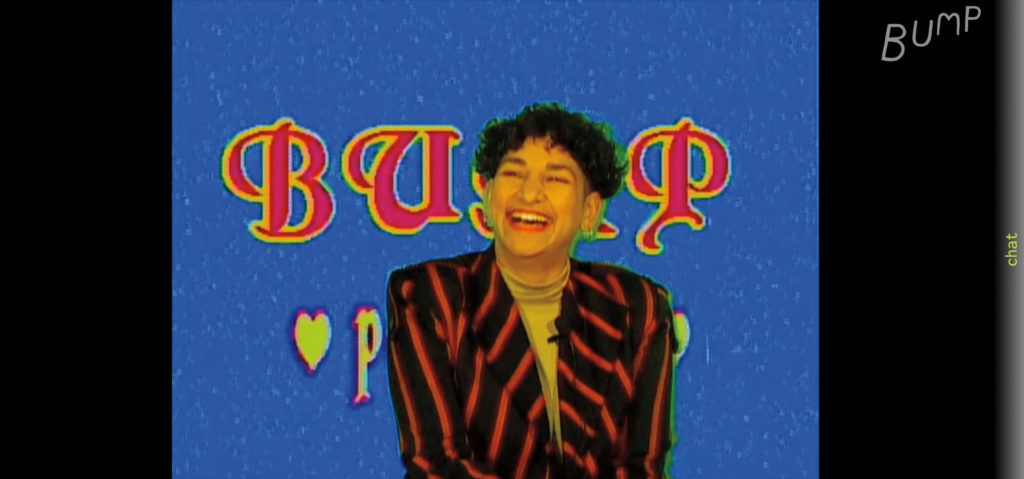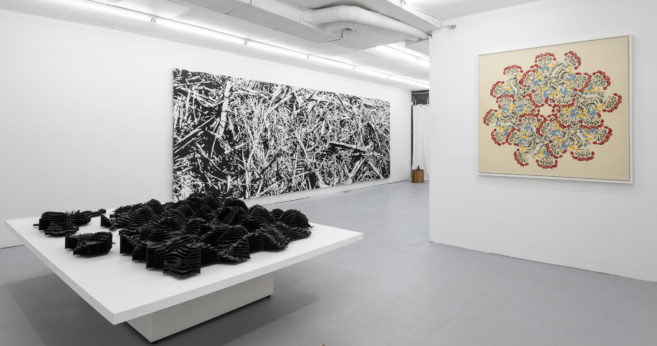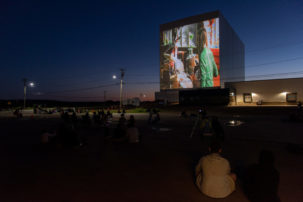The first time I watched public-access TV was through YouTube clips uploaded by fans who were, like me, fascinated by strangers’ candid unfoldings of nerves and courage. This also dates me particularly, traced through my access to mass media forms. Often funded by the government or as community projects of bigger broadcasters, and compared now to more polished URL identities with wider reach, early self-broadcasting was rarely lucrative for its performers. Its intimacy reflects back to the viewer small-scale desires and, in its best form, larger optimistic, radical politics.
BUMP TV—Toronto’s only artist-run, public-access internet TV station—salvages a mode of dreaming through mass media that is non-commercial (run by volunteers and largely self-funded), materially collaborative (anyone can make a show in their studio) and open access (anyone can submit). Their mandate is not strictly based on broadcasting, although the internet further lowers economic constraints, but the non-hierarchal and playful ways of working originally captured by public-access platforms. Launched in October 2018 by a board of nine artists, musicians and other creators, BUMP tries to air every original submission it receives, unless the content is hateful or harmful. Weekly viewings of submissions are open to everyone. With precedents that range from seminal video artist Nam June Paik’s New Year’s variety show, Good Morning Mr. Orwell (1984), to New York’s online public-access station 8 BALL TV, BUMP follows the lineage of activists and media artists turning to models that lower the stakes of experimentation, and promote the pleasures of other people’s weirdness and the flattening of “high” and “low” art.
I’m never bored watching BUMP’s 24-7 programming, now with a fun and minimal “chat zone” next to the broadcast screen. Most videos run a few minutes long: works by Life of a Craphead and Bridget Moser air alongside Somali music videos and poetry readings by Aisha Sasha John and Phoebe Wang. In a purposely badly animated series, Hannah Epstein drawls, “Do you own art you don’t understand? Call Art Detectives now.” Rah Eleh, in SuperNova, parodies a talent show to examine race and ethnic performance. Two awkward people judge bird videos.
For Valentine’s Day, BUMP filmed a series of personal ads that currently air on rotation: think talking heads over a green screen and dated aesthetics. Interested viewers are invited to email BUMP about connecting with someone who wants to jump in a snowbank, be partners in oblivion or fellow hedonistic dirtbags. If BUMP feels engaging and direct, it’s because the public-access model recuperates a way of interacting with each other that is less opaque, and contained in slower time than its online corporate-media counterparts. This is not nostalgia, but a change in rhythm offered by an accessible community platform with many possibilities. You might tune in and suddenly it’s 1:05 a.m. and Matt Miwa is “cuntstructing” a catsuit out of garbage bags as a form of feminist protest as he croons the Eagles’ “Desperado” a cappella: “You better let somebody love you / Before it’s too late.”

 BUMP TV personal ad. Courtesy bumptelevision.com.
BUMP TV personal ad. Courtesy bumptelevision.com.






